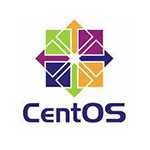I am trying to build using:
FROM mcr.microsoft.com/dotnet/core/sdk:2.1 AS builder
COPY pythonnet/src/ pythonnet/src
WORKDIR /pythonnet/src/runtime
RUN dotnet build -f netstandard2.0 -p:DefineConstants="MONO_LINUX;XPLAT;PYTHON3;PYTHON37;UCS4;NETSTANDARD" Python.Runtime.15.csproj
# copy myApp csproj and restore
COPY src/myApp/*.csproj /src/myApp/
WORKDIR /src/myApp
RUN dotnet restore
# now copy everything else as separate docker step
# (copy to staging folder, remove csproj, and copy down - so we don't overwrite project above)
WORKDIR /
COPY src/myApp/ ./staging/src/myApp
RUN rm ./staging/src/myApp/*.csproj
&& cp -r ./staging/* ./
&& rm -rf ./staging
This was working fine, and in Windows 10 still does, but in CentOS 7 I get:
Step 10/40 : RUN rm ./staging/src/myApp/*.csproj && cp -r ./staging/* ./ && rm -rf ./staging
---> Running in 6b17ae0fae89
cp: cannot stat './staging/src/myApp/myApp.csproj': No such file or directory
Using ls instead of cp throws a similar file not found error, so it looks like Docker still knows about myApp.csproj but cannot see it since it has been removed.
Is there a way around this? I have tried using rsync but similar problems.

 Question posted in
Question posted in 

4
Answers
I simply ignored the issue by tacking on
;exit 0on the offending lines. Not great, but does the job.EDIT: This worked for me as I cannot upgrade the version of CemtOS. If you can, check out Alexander Block's answer.
I don’t know specifically how to solve this problem as there’s a lot of context in the filesystem that you haven’t (and probably can’t) share with us.
My suggestion on a strategy is that you:
docker exec -it [image] bashto jump into the imageIt’s not as fun as a perfectly insightful answer of course but this is a relentlessly effective algorithm even if it’s tedious and annoying.
EDIT
My wild guess is that somehow, someway the linux machine doesn’t have the file where it’s expected for some reason and so it doesn’t get copied into the image at all and that’s why the docker build process can’t find it. But there’s no way to know without debugging the build process.
cp -rwill stop and fail with thatcannot stat <file>message whenever the source is a symbolic link and the target of the link does not exist. It will not copy links to non-existent files.So my guess is that after you run
COPY src/myApp/ ./staging/src/myAppyour file./staging/src/myApp/myApp.csprojis a symbolic link to a non-existent file. Why the followingRUN rm ./staging/src/*.csprojdoesn’t remove it and stays silent about that, I don’t know the answer to that.To help demonstrate my theory, see below showing cp failing on a symlink on Centos 7.
Notice how you copy reports that it cannot stat either the source or destination of the symbolic link. It’s the exact symptom you are seeing.
If you just want to get past this, you can try
tarinstead ofcporrsync.Instead of
use this instead:
tar will happily copy symlinks that don’t exist.
You’ve very likely encountered a kernel bug that has been fixed a long time ago in more recent kernels. As of https://de.wikipedia.org/wiki/CentOS, CentOS 7 is based on the Linux Kernel 3.10, which is pretty old already and does not have good Docker support in regard to the storage backend (overlay filesystem).
CentOS tried to backport needed fixes and features into 3.10, but seems to not have succeeded fully when it comes to overlay support. There are multiple (slightly different) issues regarding this which you can find when searching for "CentOS 7 overlay driver" on the internet. All of them have in common that removing of files from parent overlays does not work as expected.
For me it looks like
rmcalls on files return success, even though the files are not fully removed. Directory listings (e.g. bylsor shell expansion as in your case) then still list the file, while accessing the file then fails (no matter if read, write or deletion of the file).I assume that what you’ve seen is just another incarnation of these issues. You should either switch to CentOS 8 or upgrade your Kernel (which is not officially supported by CentOS as far as I understand). Or even more radical, switch to a distribution which is used more often in combination with Docker and generally offers more recent Kernels, e.g. Debian or Ubuntu.